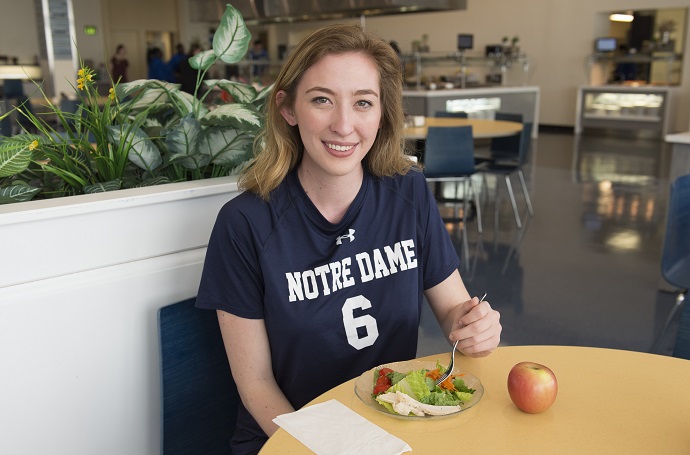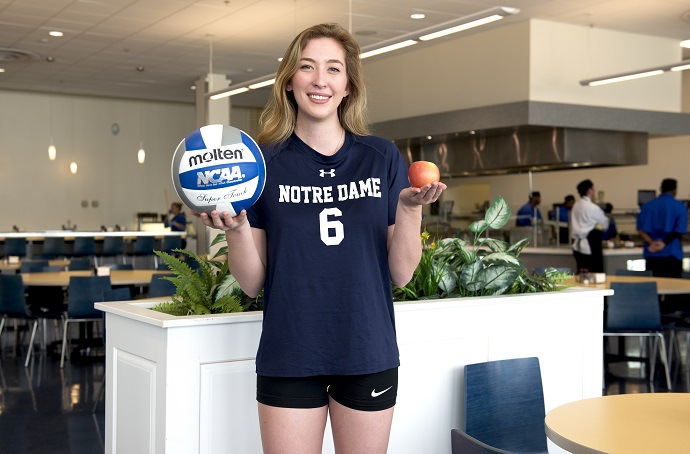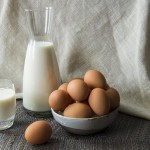About 30% of teen athletes skip breakfast and 25% skip lunch. That’s a big mistake. Student athletes have different nutritional needs, especially on training and game days. To perform their best, they need the right fuel.
There are three key components to the ideal “performance plate”: grains or starches, proteins, and fruits and vegetables.
Grains/Starches: Energy
Glucose, the building block of carbohydrates, is the main source of energy for our muscles and our central nervous system. First, our bodies use what’s available in your bloodstream. Then they move on to glycogen, the stored glucose in our muscles and liver. The body can only store so much glycogen, so it’s vital to replenish its stores. If it runs out, then it’ll begin to break down muscle proteins for energy, which negatively impacts performance and recovery. Without adequate fuel, athletes experience fatigue, difficulty concentrating, and reduced motor skills.
Proteins: Recovery & Muscle-Building
Proteins are involved in the development, growth, and repair of muscle as well as other body tissues. Lean dietary protein is best because too many saturated fats will promote inflammation, which is detrimental to performance and recovery.
Fruits & Vegetables: Defense
Fruits and veggies provide our bodies with vitamins and minerals that help us stay healthy! They also provide antioxidants, which keep our immune systems in top shape for performance, aid in recovery, and protect cells from oxidative stress caused by increased oxygen intake during exercise.
And Don’t Forget to Hydrate!
Adequate hydration is critical both in preparation for, and in recovery from, physical activity. In addition to drinking the recommended half of his or her body weight in ounces of water a day, there’s always room for fluid-rich fruits and vegetables in an athlete’s diet.
But stop and think before you pick up that Gatorade®! Sport drinks are formulated to contain carbohydrates and electrolytes to replenish the fluids, nutrients, and energy depleted during heavy activity. But that can mean a lot of sugar. Most commercial brands average 30 to 40 grams of added sugar per 20-ounce bottle—70% of the recommended maximum amount of added sugar for an average adult. That doesn’t mean sports drinks should be avoided - just that they should be reserved for physical activity lasting longer than 60 minutes, the threshold that indicates excessive sweating and nutrient depletion.
Training and Game Day—What’s the Difference?
On training days, it’s recommended that athletes eat equal amounts of grains/starches, protein, and vegetables. But on game days, they need more energy.
For intense training and competition, glucose stores need to be topped off. The 1960s studies that gave us “carbo-loading” were onto something. The carbohydrates athletes consume one hour before exercise add to their glucose levels, and those consumed four hours before exercise add to their glycogen stores.
But eating moderate amounts of fiber, fat, and protein keep athletes satiated during a game. Eating too much of these, however, would lead to slow digestion and the discomfort of exercising on a full stomach. Use these guidelines, which hold true across all meals—breakfast, lunch, and dinner – when building a plate on training and game days.
Performance Spotlight
With a new SAGE program called Performance Spotlight that's launching this fall, our team of Registered Dietitians will construct ideal “performance plates” from the day’s offerings that incorporate the necessary nutrients in appropriate proportions for student athletes. These plates will consider a range of activity levels and draw upon guidelines laid out by the United States Olympic Committee; the National Collegiate Athletic Association; the Sports, Cardiovascular, and Wellness Nutrition Dietetic Practice Group; and other major sports nutrition associations.
Take it from a college student athlete participating in two sports. Ashley Guy, junior basketball and volleyball player at Notre Dame of Maryland University, talks about the benefits of the Performance Spotlight program.
“Coming into the dining hall before a game or practice, there are so many options that you don’t know exactly what to do,” Ashley says. “We’re all thinking about homework, any drama that’s going on, sports, if we’re going to make it to playoffs. So when we go in there, we’re just grabbing whatever we see. We have the option of eating three bowls of cereal if we want. But if we have something in front of us guiding us on what we should be eating, that’d be a lot easier.”








